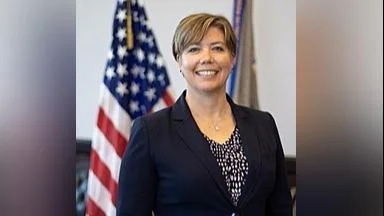Cuyahoga Heights Middle School students learn first-hand how to protect themselves on the Internet as well as during an emergency.
From making informed choices on the Internet to discerning the symptoms of a stroke, seventh and eighth graders at Cuyahoga Heights Middle School learned first-hand how to apply important safety measures during Safety Week December 14-17.
Regarding Internet safety, students were shown how to check a site’s authenticity and reminded never to share personal information unless they were certain it was safe to do so. They were reminded not to respond to emails, text, or messages from strangers; how to use caution when posting or sharing photos online; and not to click on suspicious links or attachments.
Police officers and firefighters from Cuyahoga Heights, Valley View, and Brooklyn Heights taught students how to handle emergency situations. A presentation entitled “Run, Hide, Fight” gave students important tips on what to do in the event of encountering an armed intruder.
“Fire Extinguisher Training” focused on the different types of fire extinguishers and how to use them on various kinds of fires. “A lot of kids are home alone, babysitting, using the stove, and so forth,'' explained Lt. Reno Contipelli of the Cuyahoga Heights Fire Department. “We have a device that creates fire and we use it to show kids how to respond to a fire and use an extinguisher to put it out immediately before it grows bigger. This is especially important today because we have so much plastic and other substances in our homes that are more flammable and burn a lot hotter than generations ago.”
“Stop the Bleed” focused on techniques to handle blood flow from cuts and wounds, Students practiced tying tourniquets on one another and using a lifelike medical dummy to apply pressure to a wound.
Using a program sponsored by the Cleveland Clinic, “Stroke 101” acquainted students with the warning signs of a stroke. Now when they encounter someone who is experiencing symptoms of a stroke, they know how to handle the situation.
“We explained what happens when you call 911 and what to do in the few minutes until we get there,” added Contipelli. He was hopeful that the students came away with the understanding that what they do while waiting for the rescue squad to arrive can contribute to saving someone’s life. “First and foremost, we want them to be safe while handling an emergency,” he added. “If they get a little bit of knowledge on how to help someone else, well, that’s valuable too.”
Original source can be found here.






 Alerts Sign-up
Alerts Sign-up